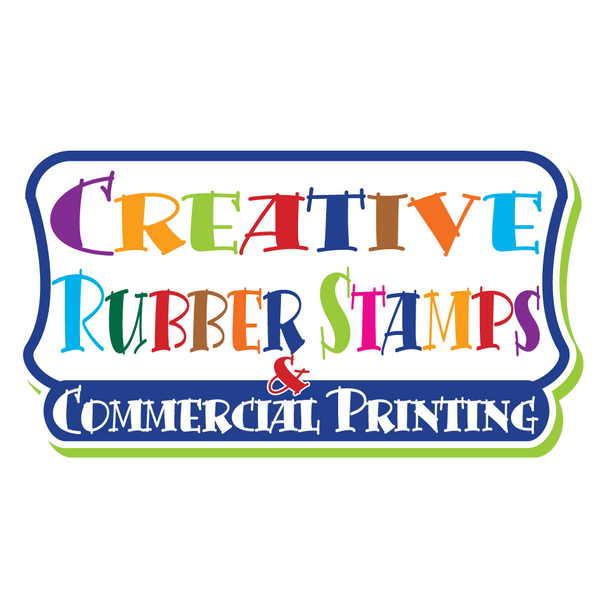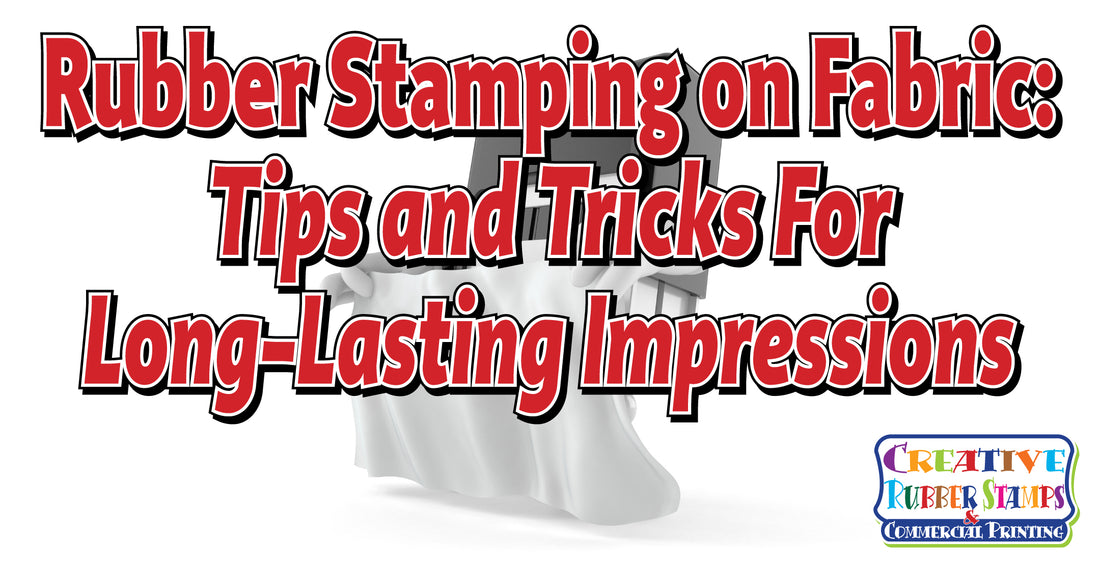A wealth of opportunities awaits after learning how to use a rubber stamp on fabric, whether you want to cultivate a cohesive identity and boost brand memorability or want to design a one-of-a-kind shirt. There are many practical uses of rubber stamping fabric that go beyond design or marketing. Stamps can be used to showcase care instructions or fabric breakdowns on products saving business owners money and avoiding often-itchy clothing tags.
Creating a custom stamp for you or your business is a surefire way to leave a great impression. However, stamps without staying power can look less than ideal. Rubber stamping on fabric is an affordable way to increase your reach, expand your creativity, and design professional quality products. Scroll below to learn all the tips and tricks for making your impression last.
Let’s Start At The Very Beginning… a very good place to start
If you are unfamiliar with how to use a rubber stamp on fabric, not to worry! The process is simple and can be learned quickly. Before you begin, gather all your stamping materials, including a fabric stamp or a custom stamp, fabric, and fabric ink. You will also want to have some scrap paper and scraps of the fabric you are going to be stamping, as this helps avoid mistakes and defend against spills during the project.
Finding The Right Fabric
While fabric stamps work on most materials, they come out best on tightly woven fabric. Synthetic fabric, fabric with a glossy or shiny finish, or loosely woven fabrics pose a higher risk of ink bleeding or stamps going on unevenly. When this happens, the impression can wind up messy and unprofessional.

That’s why our first tip is to opt for a material like cotton, canvas, or linen. Choose a light color allowing the ink to be prominently displayed. By finding the right fabric, you are setting yourself up for success. If you are unsure about your fabric choice, do a test run! Your scrap fabric should be the same as your item or at least made with a similar material. This lets you try out your stamp and ink while practicing your technique. Practice makes perfect and it avoids the frustration of having to throw out an otherwise usable item.
Use The Power Of Preparation | Clean Your Station & Your Fabric
Preparation is the key to success with anything in life, and stamping is no different. There is no going back when it comes to stamping fabric, so preparing the product and your project station is essential. Prepare your stamping station as if it is a craft or art project. The table should be flat, clutter-free, and covered with scrap paper to protect it against any ink spillage.
The fabric should be prewashed before you start. This is because most materials are made with a coating that gets in the way of stamp longevity. Wash and iron the material for a stamp that goes on smoothly and an impression that lasts.
Picking Your Perfect Stamp
A high-quality stamp, like the ones at Creative Rubber Stamps, will last a lifetime, and the other dos and don'ts won’t help if your stamp isn’t up to snuff. Self-inking rubber stamps or clear stamps are our #1 choices, as these work on many different materials. Clear stamps let you see the placement, making them ideal for first-timers. Self-inking rubber stamps offer ultimate convenience if you plan to use the stamp multiple times.
Go Big Or Go Home | Strategies For Stamps
When choosing a design for your stamp, the best option is to create a signature stamp with a larger, slightly more simplistic pattern. While address stamps can be small with intricacies, fabric stamps should have fewer details, as they can be smudged in the process, and any mistakes made are permanent. Shapes, patterns, and larger designs work great for rubber stamps and can be customized with a brand and/or logo!
Tread Lightly But Carry An Inky Stamp | Using The Right Amount Of Ink
The most important trick for rubber stamping fabric is using the right amount of ink. You want the rubber stamp to be coated with an even layer of ink so that it goes on smoothly but not so much that it bleeds or runs. Too little ink will lead to a lackluster result, but too much ink can be disastrous! That is why it is always best to err on the side of caution, especially on your first try. Do not make the mistake of using acrylic paint, as it can get stiff and look wrinkled. Fabric paint can be used, but applying the paint to the stamp can be precarious, which is why we suggest permanent fabric ink.
Press On | Tips For Immaculate Impressions
Coat your rubber stamp with ink and create an impression on the scrap fabric. You want to press the stamp straight down into the fabric with a medium amount of pressure. Try your best not to move the stamp after placing it, even if you didn't quite hit the mark. Moving, wiggling, or pressing the stamp more than once will smudge the ink. Smudges generally look worse than if the design is slightly askew. After you get the hang of it, you can move on to your product, using the stamp as many times as you need to create the look you are after.

It’s Getting Hot In Here | Using Heat To Set Your Stamp
After your stamp is fully dry, it's time to set it with heat. Heat leads to a permanent impression on the fabric. You can set the design using an iron or heat gun tool, giving the stamp staying power through multiple washes.
Creative Rubber Stamps | Giving You A Stamp of Approval
Rubbing stamping fabric allows us to create professional-grade designs. At Creative Rubber Stamps, we create custom stamps, complete with any shape, name, or logo. With your own signature stamp, creating canvas totes, and tagless t-shirts, will be a breeze now that you have all the tips and tricks for a long-lasting impression.
Time to start stamping!

